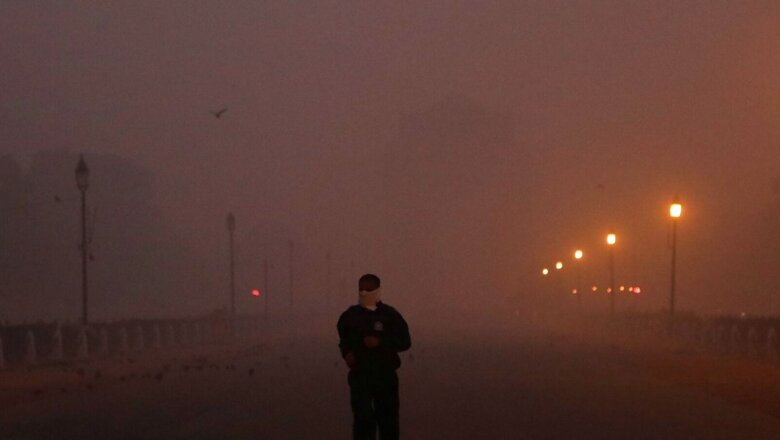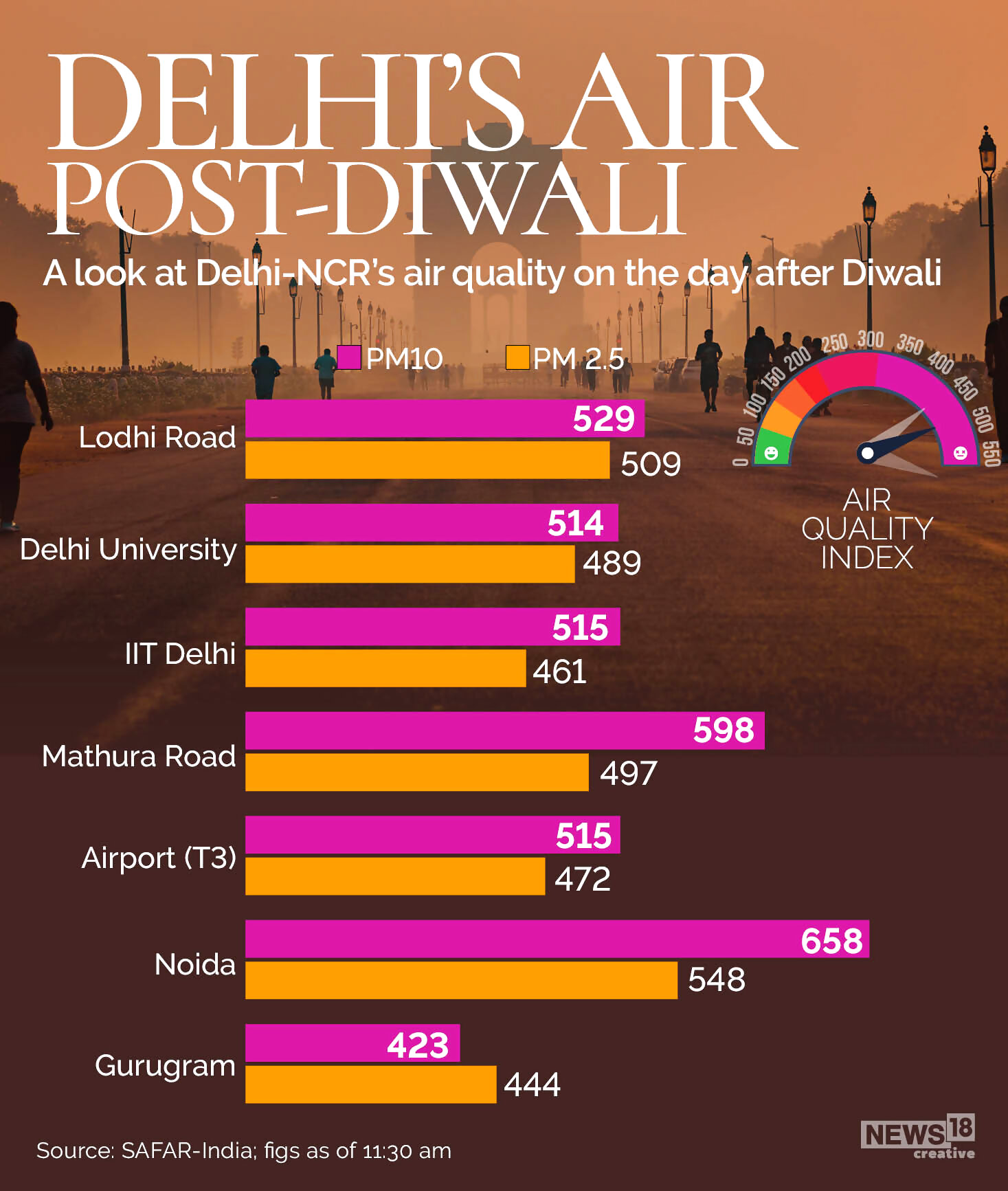
views
Delhiites on Friday morning woke up to “severe” air quality and a thick blanket of smoke that shrouded the national capital post-Diwali. The air in Delhi and surrounding areas hung heavy with acrid smoke as people burst firecrackers on Diwali in a blatant disregard to the government’s ban on it amid a sharp increase in fumes from farm fires. The city’s overall air quality index was 451 at 8 am and entered the “severe” category, according to the Ministry of Earth Sciences’ air quality forecast agency System of Air Quality and Weather Forecasting And Research (SAFAR).
At around 3am, the air quality at Janpath in Delhi was in ‘hazardous’ category with PM2.5 at 655.07.

India Meteorological Department (IMD), Delhi’s RK Jenamani told ANI, “Overall air quality in ‘severe’ category today after bursting for firecrackers on Diwali and presence of bio-mass pollutants in Delhi. The air quality and fog condition to improve once windspeed picks up. No wind and high moisture is causing fog conditions.”
The AQI is a number used by government agencies to assess and communicate air pollution levels to the public. A higher AQI indicates unfavourable health effects for a huge proportion of the population. An AQI between zero and 50 is considered “good”, 51 and 100 “satisfactory”, 101 and 200 “moderate”, 201 and 300 “poor”, 301 and 400 “very poor”, and 401 and 500 “severe”.
ALSO READ: Delhi’s Air Quality ‘Very Poor’. Here’s All You Need to Know About AQI & How It’s Measured
According to the Central Pollution Control Board (CPCB), the 24-hour average concentration of lung-damaging fine particles known as PM2.5 in Delhi-NCR shot up from 243 micrograms per cubic metre at 6 pm on Thursday (Diwali day) to 410 micrograms per cubic metre at 9 am on Friday, around seven times the safe limit of 60 micrograms per cubic metre.
The PM10 levels crossed the 500 micrograms per cubic metre mark around 5 am on Friday and stood at 511 micrograms per cubic metre at 9 am. According to the Graded Response Action Plan (GRAP), the air quality is considered to be in the emergency category if PM2.5 and PM10 levels continue to be above 300 micrograms per cubic metre and 500 micrograms per cubic metre, respectively, for 48 hours or more.
Fog conditions intensified in Delhi-NCR on Friday morning lowering visibility at the Indira Gandhi International Airport and the Safdarjung Airport to the range of 200 to 500 metres at 5:30 am. Visibility in parts of the city dropped to 200 metres, said R K Jenamani, senior scientist at India Meteorological Department (IMD).
Of the 39 air quality monitoring stations in Delhi, 33 reported their AQI in the severe category. The capital’s air quality had entered the severe zone on Thursday night as people burst firecrackers on Diwali in a blatant disregard to the government’s ban on it amid a sharp increase in smoke from farm fires.
The neighbouring cities of Faridabad (454), Greater Noida (410), Ghaziabad (438), Gurgaon (473) and Noida (456) recorded severe air quality on Friday morning.
People from several parts of the city and its suburbs complained of itchy throat and watery eyes, as a layer of smog, the first this season, lingered over the region.
ALSO READ: Data From 5 Years Shows AQI Shot up to Toxic Levels Each Diwali, Delhiites Learnt No Lessons
On Thursday, residents of Lajpat Nagar in South Delhi, Burari in North Delhi, Paschim Vihar in West Delhi and Shahdara in East Delhi reported incidents of firecracker bursting as early as 7 pm, despite the blanket ban in the national capital till January 1, 2022.
Several incidents of high-intensity cracker bursting were reported from Gurgaon and Faridabad despite a ban on the sale or use of all kinds of firecrackers in 14 of Haryana’s districts.
According to SAFAR model forecasts, stubble burning share may increase to 35 per cent on Friday and 40 per cent on Saturday with the wind direction changing to northwesterly. Northwesterly winds carry smoke from farm fires in Punjab and Haryana towards the national capital.
The Uttar Pradesh government had allowed the use of green crackers on Diwali only for two hours in areas with moderate or better air quality. Experts said the air quality turned severe owing to unfavourable meteorological conditions — calm winds, low temperature and low mixing height — and a poisonous cocktail of emissions from firecrackers, stubble burning and local sources.
The SAFAR said the share of farm fires in Delhi’s pollution rose to the season’s highest at 25 per cent on Thursday and is expected to go up to 35 percent on Friday and 40 per cent on Saturday. Relief is expected only from the evening of November 7 but AQI will fluctuate within the very poor range, the air quality forecast agency said. Last year, the share of stubble burning in Delhi’s pollution had peaked at 42 per cent on November 5.
Reacting to the air quality of the national capital, Congress leader Jairam Ramesh tweeted, “No country delights more in passing laws and then by-passing them than ours. Today, Delhi particularly is facing the consequences of this feature of our lives. Air pollution is at its most dangerous peak.”
(with inputs from PTI)
Read all the Latest India News here


















Comments
0 comment